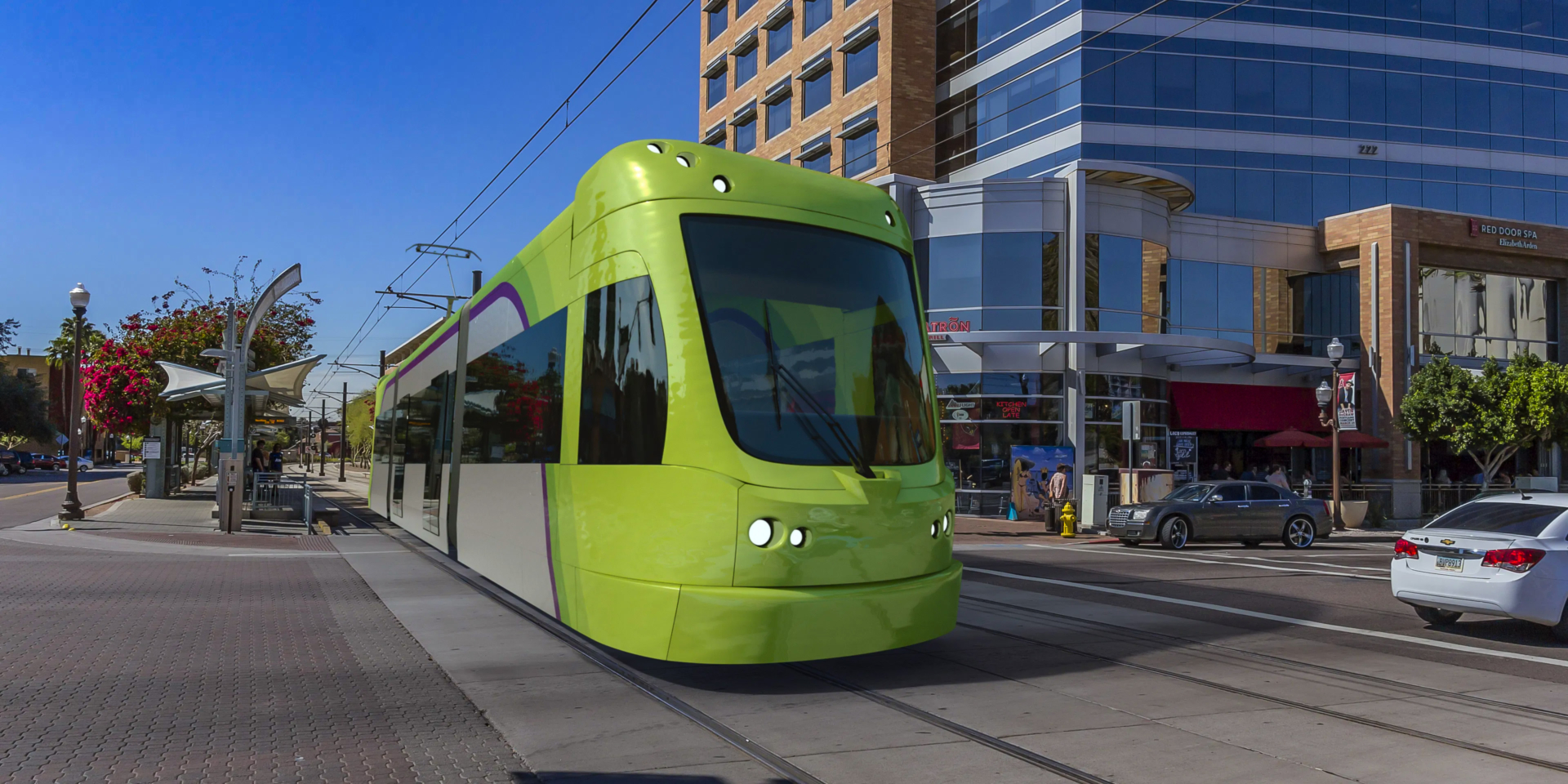The Tempe Streetcar, a $102 million project that began construction in 2017, is nearing completion and is expected to be operational in mid-2021. The Streetcar will have capacity for 125 passengers and six vehicles will be traveling along the three-mile double track alignment that borders Arizona State University campus and will run in-street from Rio Salado Parkway down Apache Boulevard with a single-track loop around Mill Avenue and the downtown district. In addition, Tempe Streetcar includes two crossing of the existing light rail line and a tie-in to the light rail at the southern terminus.
Although the pandemic has slowed much down, the construction of the Tempe Streetcar remained on schedule and will begin testing in early 2021.
Amanda Nelson, public information officer for the City of Tempe Transportation department, said with the onset of COVID-19, many Tempe employers have had employees working remotely and ASU has had remote learning, so traffic was reduced in Tempe and subsequently, the construction area for the Tempe Streetcar.
“In Tempe, the downtown area is especially tight, so with the Streetcar construction we’ve had to be very strategic about when and how we restrict any traffic and how that construction plays out,” Nelson said. “One of the silver linings, if there are any of the pandemic, was that we were able to move more quickly in those areas that normally have high traffic volumes where we’re a little more restricted.”
Brian Dagsland, project manager for Stacy and Witbeck, who is managing construction on the project, said the construction schedule has remained on time. “There have been some improvements since traffic loads have been less in the downtown area, so that’s been nice as far as being able to take up lane restrictions and having workers work safely with less car traffic. We also implemented safety procedures like face masks and keeping crew sizes smaller.”
Nelson said all the rail is in the ground, which was a major milestone for the project and all 14 stop station structures are in place, plus the structure for the catenary wires is in progress. While construction on the project has been challenging at times for nearby businesses, Nelson said, “the business community has been very supportive of the Streetcar as an amenity and as a way to bring more customers to their doors.”
“This project is very unique because we have a public private partnership between the City of Tempe, ASU and companies along the route who are partnering together to pay for $13 million of the construction expenses,” Nelson said. “So they see so much benefit from it that they want to put in money to help pay for it and help bring it about.”
“One of the unique things about the Streetcar is there’s a good portion of the Streetcar that’s actually off wire, it’s a battery-powered train, so when you’re going into downtown Mill, there’s no overhead wires to power the train, which means it’s a lot more aesthetically pleasing to not have the wires of the streetcar train for a portion of the alignment,” Dagsland said.
In addition, Nelson said each of the 14 Streetcar stops will have public art created by local artists, which are currently being implemented and history panels at each of the stops with a graphic or photo and information about Tempe’s history.
One of the main goals of the Tempe Streetcar, once it is operational in 2021, is to ease traffic congestion in the ever-developing Downtown Tempe area.
“The Streetcar will provide a new option for people to move around in the Downtown area and around ASU where there are higher volumes of traffic. It will allow students, employees and people who are visiting downtown for lunch or shopping, to not necessarily have to drive a car,” Nelson said. “It will connect with the Metro light rail as well, so people can take their bikes on the Streetcar, so it allows people to be more multi-modal and to not have to have a car to move around in that higher traffic area.”
Nelson said the Streetcar will allow people to get on and off and explore the area since the stops are closer together. “The Streetcar route goes through the heart of Tempe where we have the highest density of employment, of residential and ASU, and attractions like ASU Gammage and Tempe Town Lake for entertainment and recreation, and it also connects with the light rail so it can take people to and from the airport, into Mesa and into regional destinations in Phoenix.”
Dagsland echoed Nelson’s thoughts that the Streetcar will be a convenient way for visitors and residents to get to locations quicker without the hassle of parking.
“When leaving their apartment instead of hopping in a car or on a bike, they hop on the Streetcar and get to their destination without being involved in traffic. I think it will be more convenient while getting around town and the experience of going from an event at ASU Gammage or Sun Devil Stadium to a bar or restaurant on Downtown Mill will end up being a great opportunity.”




